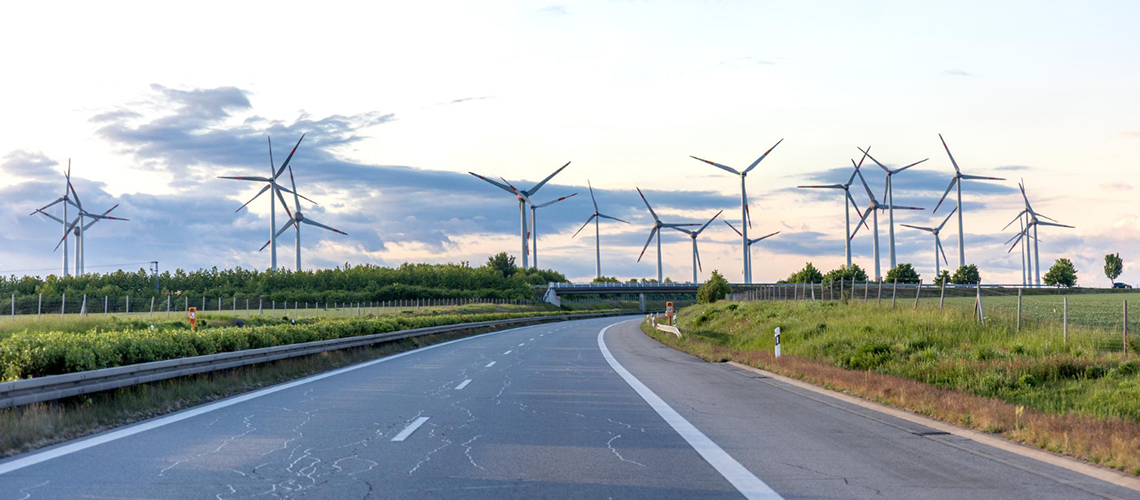The Role of Onshore and Offshore Wind in Driving Clean Energy Growth

When we talk about the future of energy, it’s clear that the winds of change are blowing in the right direction, quite literally. The world is moving away from fossil fuels and towards greener alternatives like wind energy. Whether it’s turbines spinning onshore (land) or offshore (out in the sea), wind energy is reshaping how we power our homes, offices, and industries.
In India, this shift toward clean energy is not just a trend; it's a much-needed transformation. At Jindal India Renewable Energy Limited (JIRE), we’re proud to be part of this transformation. As a subsidiary of the BC Jindal Group of Companies, we’re building on the Group’s strong legacy of innovation, sustainability, and nation-building across diverse industries.
Let’s take a closer look at how onshore and offshore wind are helping drive this transition and why we see them as essential to India’s clean energy revolution.
Onshore Wind: Power from the Ground Up
You’ve likely seen an array of turbines dotted on open plains or hilltops, or other areas with high wind speeds. These turbines, a part of onshore wind, convert wind into electricity using a fairly straightforward process. The wind turns the blades, which spin a shaft connected to a generator. Voila, clean energy!
India has been harnessing onshore wind for a while now, with Tamil Nadu, Gujarat, Maharashtra, Karnataka, and Rajasthan leading the charge. One of the biggest advantages of onshore wind farms is that they’re relatively easy and cost-effective to build and maintain. Plus, they can be deployed faster than most other renewable projects.
What’s also promising is that wind power doesn’t require water for cooling, unlike many traditional energy power plants in India, making it a viable option even in water-stressed regions like Rajasthan.
Offshore Wind: The Next Big Frontier
While onshore wind has been long established, offshore wind is the latest thing. These are wind turbines placed in ocean waters, typically on the continental shelf, where winds are stronger and more consistent. Though more expensive and technically complex to build, offshore wind farms generate significantly more power per turbine than their onshore counterparts.
Globally, countries like the UK, Denmark, and China are racing ahead with offshore wind. India is just getting started, but the potential is massive. According to estimates, India’s coastline offers over 70 GW of potential offshore wind capacity, especially in regions like Gujarat and Tamil Nadu.
By exploring opportunities in offshore wind, along with Battery Energy Storage Systems (BESS) to store excess energy, JIRE is aligning itself with global trends while addressing India’s unique power needs. Offshore wind, when combined with storage and hybrid systems, can provide round-the-clock green electricity, a game changer for a country with a growing energy demand.
Why Wind Power Matters in the Clean Energy Revolution
There’s a reason renewable energy investments are gaining traction in 2025:
1. Zero emissions
Wind turbines generate electricity without emitting greenhouse gases.
2. Scalability
Wind energy power plants in India can range from small rural setups to massive utility-scale installations.
3. Job creation
The wind energy sector creates thousands of skilled jobs in construction, maintenance, and operations.
4. Energy security
With domestic wind resources, India can reduce its dependence on imported fossil fuels.
For us, wind energy isn’t just a checkbox in our sustainability strategy; it’s central to our mission of contributing to India’s decarbonised future. Backed by the expertise and vision of the BC Jindal Group of Companies, we are committed to building a cleaner, more resilient energy ecosystem.
Final Thoughts
With India marching toward its renewable energy goals, both onshore and offshore wind have key roles to play in the clean energy revolution. Whether it's turbines turning in the fields of Rajasthan or off the coast of Gujarat, the message is clear: wind energy is no longer on the sidelines. It’s leading the charge, and India, with its ambitious climate goals and rising power demand, is ready for the ride.